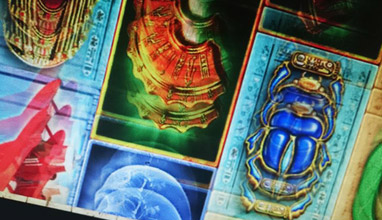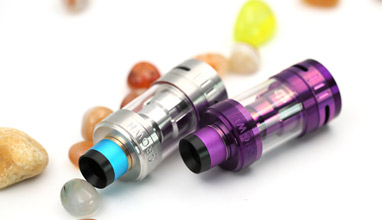Useful information about one of the most expensive gems - the diamond
In this article you will find information about the most important aspects of diamonds: carat, weight, color and clarity. If you are looking for brief information to help you decide which is the best diamond for you or a loved one, you’ve come to the right place.
Where are diamonds found?
Diamond (from Greek – adamas - "unbreakable") is a crystallized form of carbon with superlative qualities. It has the highest hardness and thermal conductivity of any bulk material.
Diamonds have been first recognized and mined in India. Today the leading countries in the producing of diamonds are: Botswana, Namibia and South Africa. Non-African leaders in the production of diamonds are Canada, Brazil, Venezuela, Russia and Australia.
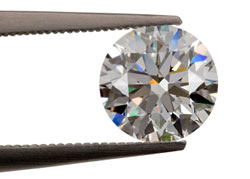 Basic anatomy of a diamond.
Basic anatomy of a diamond.
There are eight basic parts in the diamond anatomy. These are: facets, table, diameter, crown, pavilion, girdle, depth and culet.
Features of the diamonds.
Diamonds have a few basic properties except their beauty: hardness, thermal conductivity, index of refraction, carat, clarity, color, cut, fluorescence, etc.
Refraction of light depends on its polish (cut). Quality cut relates directly to efficiency and ability of the diamond to reflect and refract light, also to its beauty. The perfect cut was calculated mathematically accurate ratios to provide standard for comparison. Thus, the assessment of quality is made by comparison of the stone with the perfect proportions of the mathematical model calculations. From there, the quality of the cut can be:
ID - Ideal cut
VG - Very good cut
G - Good cut
F - Fair cut
P - Poor cut
Another important characteristic in assessing the quality of diamond is its clarity. Diamonds are divided into several types according the clarity grading scale:
FL, IF (Flawless) (Internallly Flawless)
The purity of the diamond is marked as "clean with a magnifying glass" (loupe-clean), so far, under certain conditions diamond qualifies for absolute transparency without inclusions.
VVSI (Very Very Small Inclusions)
Single inclusions which are very difficult to detect in tenfold increase.
VSI (Very Small Inclusions)
Very small inclusions which are very difficult to detect in tenfold increase.
SI (Small Inclusions)
Small inclusions, easily visible with a magnifying glass with a tenfold increase, but invisible to the naked eye from the side of the crown.
1st pique PI
Average inclusions,, hardly visible to the naked eye from the side of the crown, do not infringe brilliance.
2nd pique P II
Large and numerous inclusions, easily visible to the naked eye from the side of the crown slightly reducing the brilliance of diamonds.
3rd pique P III
Large and numerous inclusions, easily visible to the naked eye from the side of the crown, reducing brilliance of diamonds.
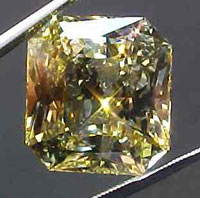 Color of the diamond.
Color of the diamond.
Diamonds are usually thought of as brilliant, colorless stones. Indeed, the colorlessness is the reason for the beautiful and breathtaking play of light, that we all associate with diamonds. Within the international color scale of diamonds, the more colorless a diamond is, the higher is rated. Diamonds that are rated higher (ie are colorless) are more expensive. Those with more color are usually more inexpensive. However when a diamond has extremely high color saturation, it may rate the grade of FA, or Fancy. These diamonds may actually cost more then the finest of the D grade (Exceptional white +) of diamonds.
Weight of diamonds (carat).
All precious gems have a system to indicate their weight. While the cut of a diamond has the greatest impact on his form and beauty, the carat has the heaviest impact on its pricing. This is due to the fact that carat refers to the actual weight of diamonds, and it is the weight that is a major indicator for how rare a diamond is. The heavier a diamond is, the more rare it will be and thus the more expensive.
The abbreviation for "carat" is "ct". In the certificates of diamonds the weight is listed either housandths of a carat or hundredths of a carat.
1 ct = 200 milligrams = 0.20 g or 6.5 mm. in a round stone.
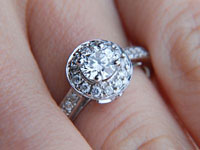 Tips for saving money when buying diamonds and diamond jewelry.
Tips for saving money when buying diamonds and diamond jewelry.
There is one simple fact which will help you save money when buying your diamond. The scale of evaluation of diamonds has several points where the price can be drastically increased or reduced. These points are responsible for the final price of polished, loose diamonds. The areas in which price changes are noticeable are: carat, color and clarity.
Carat: When looking at carat weight, note that the price of diamonds with almost equal weight can vary dramatically. This is due to the uniqueness of the stone. For example, the price of 0.99 carat diamond will be significantly different from that of stone weighting 1 ct of the same quality by $800/ct.
Color: In color, the most dramatic difference in price is just after the grades D, E and F (Exceptional white +, Exceptional white and Rare white +). Price points are found at each new grade level of "colorless", "near colorless", "slightly colored", etc.
Clarity: With clarity, the main cost point jumps occur beyond the grades of "FL" and "IF". After this first segment, the next dramatic price differences are found between grades, such as "VVSI", "VSI" and "SI".
Choosing a diamond that is just below the main cost points in one or more of the above categories, you can make a slight compromise on quality but also save a lot of money. Your diamond may not be perfect, but will be as beautiful as the best precious gems.
Information from: www.abazias.com
Hits: 14346 | Leave a comment





